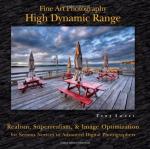|
This section contains 4,667 words (approx. 16 pages at 300 words per page) |

|
SOURCE: "Photographic Reality and French Literary Realism: Nineteenth-Century Synchronism and Symbiosis," in The French Review, Vol. LXV, No. 2, December, 1991, pp. 195-205.
In the following essay, Kelly examines the critical reaction to the rise of both photography and the Realist aesthetic in mid-nineteenth century France.
In May 1841, two years after François Arago's public announcement in Paris of the invention of photography, an anonymous critic compared Balzac's descriptive technique to the daguerreotype ("Les Lecamus"). Contemporary critics were more than reluctant to acknowledge photography as an artistic medium; they perceived it as a threat to aesthetics in general. Their reticence to accept realism as a valid literary form was equally strong. Negative comparisons between photography and the realist novel became an offensive tactic for conservative critics who sensed a battle looming between objective and subjective realities, a battle that would threaten the established order of art and aesthetics.
The early...
|
This section contains 4,667 words (approx. 16 pages at 300 words per page) |

|


